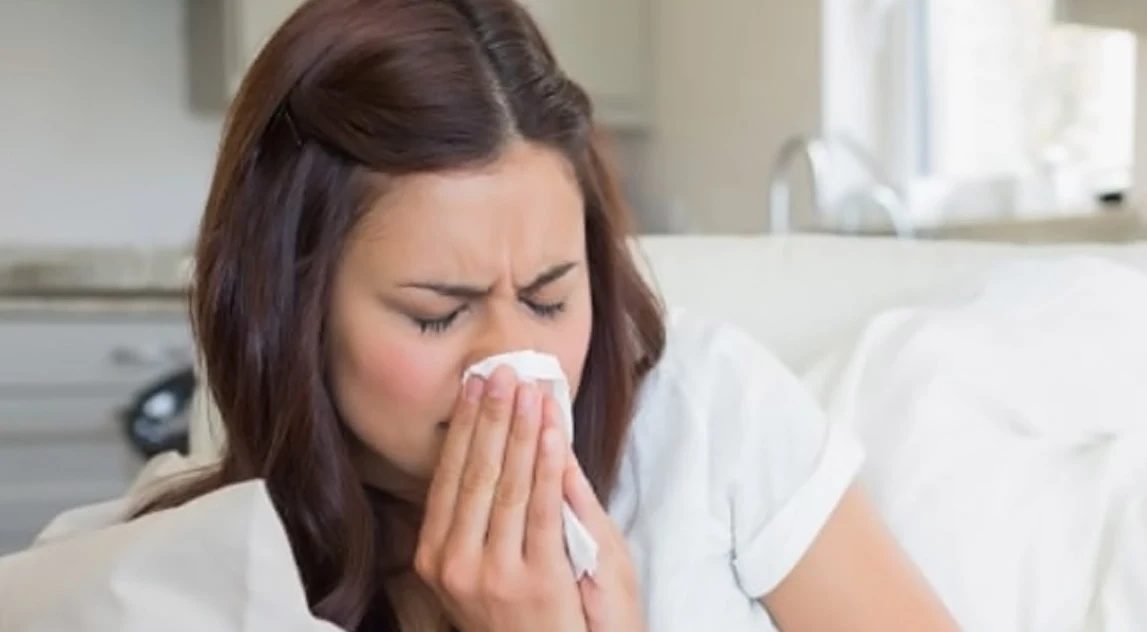If you’re feeling under the weather, you may have searched for some of your symptoms online to try to identify the cause. These days, it can be difficult to tell whether you have a cold, the flu, or COVID-19, since many of the symptoms overlap. So, how might you be able to tell if you have COVID-19? Knowing the symptoms is one way to help you assess and get the treatment you need so you can get back on your feet. Of course, the only way to know for sure if you have COVID-19 is to get tested.
COVID-19 is an upper respiratory infection caused by the SARS-CoV-2 virus.17 Most symptoms affect the lungs, nose, and throat. These are the 10 most common COVID-19 symptoms you may experience according to the Centre for Disease Control and Prevention (CDC)1:
Fever or chills:
Over the course of a COVID-19 infection, you may have a fever or chills. Fevers are the body’s way of trying to kill the virus causing the infection. They also help activate the immune system to fight against the virus, making it harder for it to survive.2 You may also experience chills with higher fevers.3
Shortness of breath:
COVID-19 attacks the lungs, specifically the cells that line the airways. This causes fluid and debris to build up in them, making it difficult to breathe.4
Cough:
Cough is also a common symptom of COVID-19. Since the virus mainly affects the airways in the lungs, you may find yourself coughing more than normal to clear out any fluid or debris.4
New loss of taste or smell:
Viruses like SARS-CoV-2 can infect and damage the specialized cells that help us smell and taste. Many people lose taste and/or smell briefly with a COVID-19 infection, and they typically return within 60 days of recovering.5
Congestion or runny nose:
COVID-19 causes inflammation in the nasal passages and sinuses, and your body responds by making clear mucus. The virus becomes trapped in this mucus and is flushed out of the nose.6,7
Fatigue:
Fatigue is common when you’re sick, and it’s one of the most reported symptoms during and after COVID-19 infections. While researchers aren’t sure exactly what causes it, they believe it’s due to a mix of inflammation, and changes in sleeping and eating patterns.8
Headache:
Studies show that around half of people with COVID-19 develop headaches or migraines. They usually begin early in infection and can be a sign that you’re becoming sick.9
Sore throat:
Sore throat is another COVID-19 symptom that appears early on with infection.10 The SARS-CoV-2 virus is spread by breathing in viral particles, which can replicate in the throat. This causes inflammation, leading to a sore throat.11
Muscle or body aches:
If you’ve been lying in bed for a few days with COVID-19, you may have achy muscles or joints. Try to get up and stretch often to avoid this. Heat and ice can also be applied to painful areas.12
Nausea/vomiting:
While most COVID-19 symptoms affect the lungs and head, studies show that nausea, vomiting, and other gastrointestinal (GI) symptoms are common as well. Researchers aren’t quite sure why this is, but they believe that cells in the GI tract may also become infected with SARS-CoV-2, causing symptoms.13
It’s important to note that this is not a complete list of symptoms, and many people may experience others that aren’t listed here.
For the relief of mild to moderate pain or fever, the CDC recommends using acetaminophen or ibuprofen to help.14
TYLENOL® is indicated for the temporary symptomatic relief of mild to moderate pain and fever. To be sure any TYLENOL® product is right for you, always read and follow the label.
IMPORTANT: Take ONLY ONE medicine at a time containing acetaminophen.
References
Centers for Disease Control and Prevention. Symptoms. March 22, 2022. Accessed from: https://www.cdc.gov/coronavirus/2019-ncov/symptoms-testing/symptoms.html
MedlinePlus. Fever. December 15, 2016. Accessed from: https://medlineplus.gov/fever.html
MedlinePlus. Chills. January 16, 2021. Accessed from: https://medlineplus.gov/ency/article/003091.htm
American Lung Association. Learn About COVID-19. June 9, 2022. Accessed from: https://www.lung.org/lung-health-diseases/lung-disease-lookup/covid-19/a...
Cleveland Clinic. Loss of Taste and Smell. March 9, 2022. Accessed from: https://my.clevelandclinic.org/health/symptoms/16708-loss-of-taste-and-s...
Cleveland Clinic. Runny Nose. April 19, 2021. Accessed from: https://my.clevelandclinic.org/health/symptoms/17660-runny-nose
Straburynski M, et al. COVID-19 -related headache and sinonasal inflammation: A longitudinal study analysing the role of acute rhinosinusitis and ICHD-3 classification difficulties in SARS-CoV-2 infection. Cephalagia. 2022. 42(3):218-228.
Azzolino D, Cesari M. Fatigue in the COVID-19 pandemic. Lancet Healthy Longev. 2022. 3(3):e128-e129.
Rocha-Filho, P. Headache associated with COVID-19: Epidemiology, characteristics, pathophysiology, and management. Headache. 2022. 62(6):650-656.
Savtale S, et al. Prevalence of Otorhinolaryngological Symptoms in Covid 19 Patients. Indian J Otolaryngol Head Neck Surg. 2021. 1-7.
Mount Sinai. Pharyngitis – viral. January 29, 2022. Accessed from: https://www.mountsinai.org/health-library/diseases-conditions/pharyngiti..
MyHealth.Alberta.ca. Symptoms: Joint and muscle pain. March 23, 2021. Accessed from: https://myhealth.alberta.ca/after-covid/symptoms/joint-and-muscle-pain
Zhang T, et al. The roles of nausea and vomiting in COVID-19: did we miss something? J Microbiol Immunol Infect. 2021. 54(4):541-546.
Centers for Disease Control and Prevention. COVID-19 Treatments and Medications. April 29, 2022. Accessed from: https://www.cdc.gov/coronavirus/2019-ncov/your-health/treatments-for-sev...
Government of Canada. COVID-19: Symptoms, treatment, what to do if you feel sick. July 18, 2022. Accessed from:
https://www.canada.ca/en/public-health/services/diseases/2019-novel-coro...
Government of Canada. COVID-19 treatments. October 18, 2022. Accessed from: https://www.canada.ca/en/health-canada/services/drugs-health-products/co...
World Health Organization. Coronavirus disease (COVID-19). March 14, 2023. Accessed from: https://www.who.int/health-topics/coronavirus
